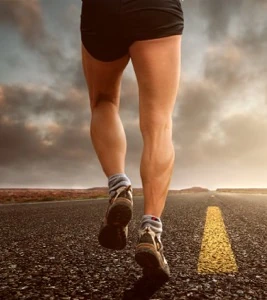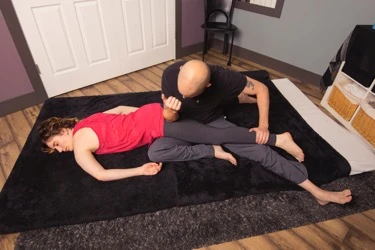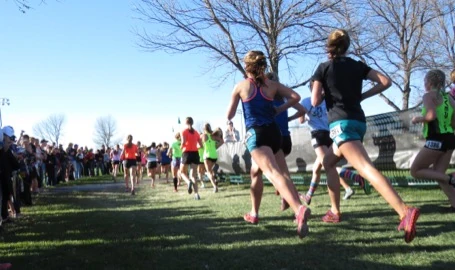Four Holistic Treatments Perfect for Runners
Monday, September 11, 2017, 12:45 AM
Maintain Your Runner's High

Running is one of the most popular cardiovascular exercises around. We see runners everyday: on treadmills at the gym, on nature trails, and making their way down city sidewalks. We see them on perfect fall days, when the best place to be is outside. We also see them braving the rain, snow, and blistering heat.
For some, running is simply part of an exercise routine that promotes overall health. For others, it is a lifestyle. Whatever a runner's relationship to the sport, be it casual or committed, there is potential for injury, muscle fatigue, and tension.
Massage and other holistic health treatments are a vital part of both injury prevention and rehabilitation. The following four types of treatments are essential to keeping runners active and healthy.
1. Sports Massage
One of the most popular types of massage that runners and other athletes seek out is sports massage. Practitioners of sports massage have a particular interest in supporting the needs of athletes through increased focus on injury prevention and treatment.
Sports massage is similar to deep tissue massage, although its focus is solely on managing and preventing injuries, improving flexibility and range of motion, and enhancing muscle performance.
Major sports teams will often employ a massage therapist as part of their therapy team. This therapist works with the athletes to prime their muscles before a game or race, offers short and vigorous treatments mid-performance, and treats fatigue and injury post-activity.
2. Rolfing®
Rolfing® focuses on the fascial structure of the body and how to manipulate it to restore proper function.
Fascia is the connective tissue that surrounds, connects, stabilizes, and separates the muscles and organs. It is an all-encompassing framework within the body that supports optimal range of motion. However, when fascia isn't moved, stretched and released properly, or if it has been injured, adhesions and other distortions can occur. This can cause pain, tightness, and postural imbalances, leading to inhibited range of motion.
Rolfing® uses deep-tissue bodywork to release the stress-patterns and adhesions within the fascia. Practitioners work sequentially though areas and layers of the body, and the treatment is customized to each client's unique needs.
Runners who receive Rolfing® can maximize their fascial functioning and restore it to its natural state. The athlete can experience more efficient movement, reduced pain, reduced risk of injury, and better balance.
3. Thai Massage
Thai Massage is a unique practice that blends 104 movements and postures taken from traditional yoga with massage and acupressure.
Treatment is performed on a mat or low table. The practitioner assists the client in moving through various postures while using their body to support the client. The therapist will simultaneously perform massage and stretches on the client to open the joints and stimulate blood flow.

Thai Massage increases range of motion, releases chronic muscle tension, improves blood circulation, and balances optimal energy flow.
Thai massage also has positive effects on the immune system, the respiratory system and the nervous system due to relaxed muscles and increased lymphatic fluid movement.
Athletes benefit greatly from this treatment. Increased flexibility and range of motion help prevent injury, increased circulation prevents muscle fatigue, and balanced systems keep runners healthy and moving.
4. Trigger Point Therapy
Trigger points are fixed, rigid areas in the myofascia that feel painful, tender and stiff. They develop when there is a disruption to the natural contraction and release of muscles caused by structural imbalances, trauma, and overused muscles.
Trigger points can pull on ligaments and tendons causing pain in other areas of the body.
Trigger points are common among athletes and create a barrier to optimal performance. They inhibit range of motion and weaken muscles by disrupting the flow of oxygen and nutrients to the muscles. The muscle then becomes short and tight, and the resulting pain can be severe.
Trigger Point Therapy uses a combination of compression, stretch, and hydrotherapy to release active and tightened trigger points. Various acupressure and fascial release techniques are commonly added to treatment to increase energy flow to problem areas and release tightened tissue.
Runners often see a reduced recovery time for their trigger points and reduced rate of re-injury
Stay Injury Free
No runner wants be told they have to take a break. Specific massage techniques can address old injuries, as well as ensure muscles are strong and healthy to prevent new ones from occurring.
Learn more about these treatments and other holistic health practices using the NHPC Holistic Health Guide.


